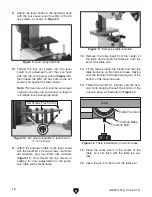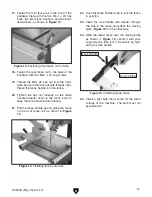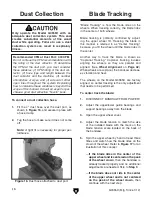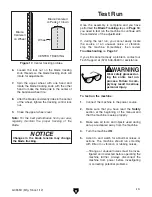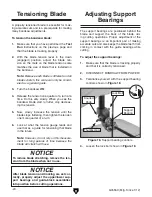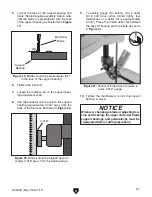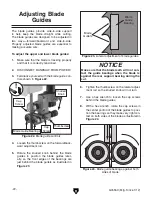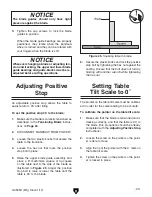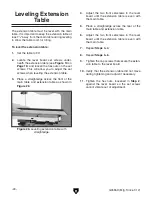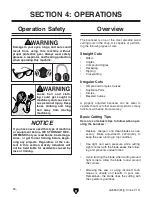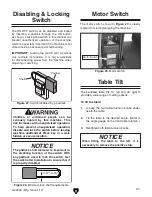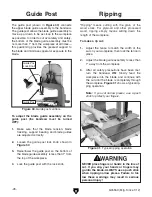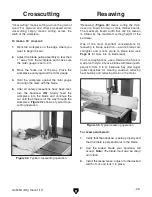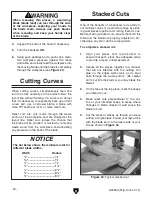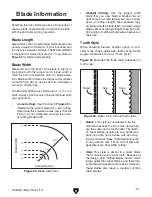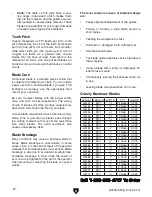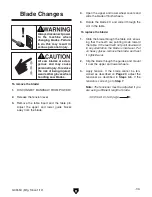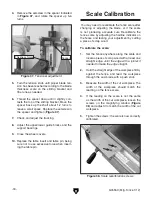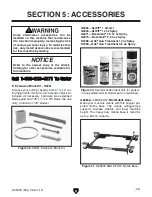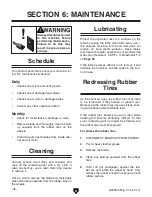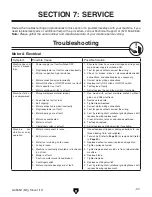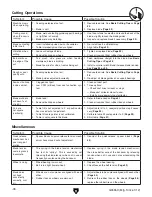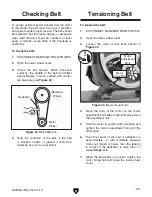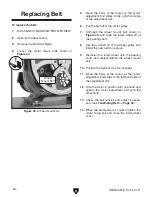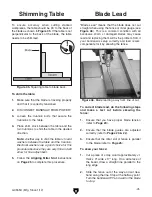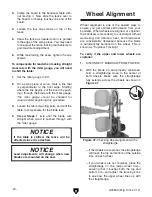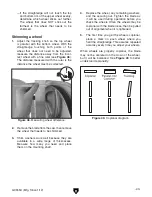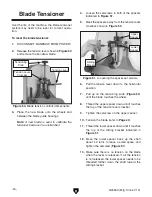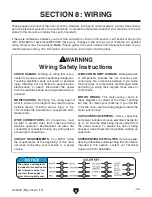
-30-
g0555X
(Mfg. since 1/12)
When resawing thin pieces, a wandering
blade (blade lead) can tear through the side
of the workpiece, exposing your hands to
the blade teeth. Always use push blocks
when resawing and keep your hands clear
of the blade.
4. support the ends of the board if necessary.
5. turn the bandsaw ON.
6. using push paddles and a push stick, main-
tain workpiece pressure against the fence
and table, and slowly feed the workpiece into
the moving blade until the blade is completely
through the workpiece (see
figure 33).
When cutting curves, simultaneously feed and
turn the stock carefully so the blade follows the
layout line without twisting. if a curve is so abrupt
that it is necessary to repeatedly back up and cut
a new kerf, use a narrower blade, a blade with
more tpi (teeth per inch), or more relief cuts.
relief cuts are cuts made through the waste
portion of the workpiece and are stopped at the
layout line. relief cuts reduce the chance that
the blade will be pinched or twisted by removing
waste wood from the workpiece and alleviating
any pressure on the back of the blade.
NOTICE
The list below shows the minimum radii for
different blade widths.
Width
Radius
1
⁄
8
" ....................................
1
⁄
8
"
3
⁄
16
" ...................................
3
⁄
8
"
1
⁄
4
'' ....................................
5
⁄
8
''
3
⁄
8
'' .................................... 1
1
⁄
4
''
1
⁄
2
'' .................................... 2
1
⁄
2
''
5
⁄
8
'' .................................... 3
3
⁄
4
''
3
⁄
4
'' .................................... 5
1
⁄
2
''
cutting curves
one of the benefits of a bandsaw is its ability to
cut multiple copies of a particular shape by stack-
ing workpieces together and cutting them as one.
before making stacked cuts, ensure that both the
table and the blade are properly adjusted to 90°;
otherwise, any error will be compounded.
To complete a stacked cut:
1. align your pieces from top-to-bottom to
ensure that each piece has adequate scrap
to provide a clean, unhampered cut.
2. secure all the pieces together in a manner
that will not interfere with the cutting. hot
glue on the edges works well, as do brad
nails through the waste portion. (be careful
not to cut into the brads or you may break the
blade!)
3. on the face of the top piece, mark the shape
you intend to cut.
4. Make relief cuts perpendicular to the out-
line of your intended shape in areas where
changes in blade direction could cause the
blade to bind.
5. Cut the stack of pieces as though you were
cutting a single piece. Follow your layout line
with the blade kerf on the waste side of your
line as shown in
figure 34.
figure 34. typical stacked cut.
Stacked cuts

